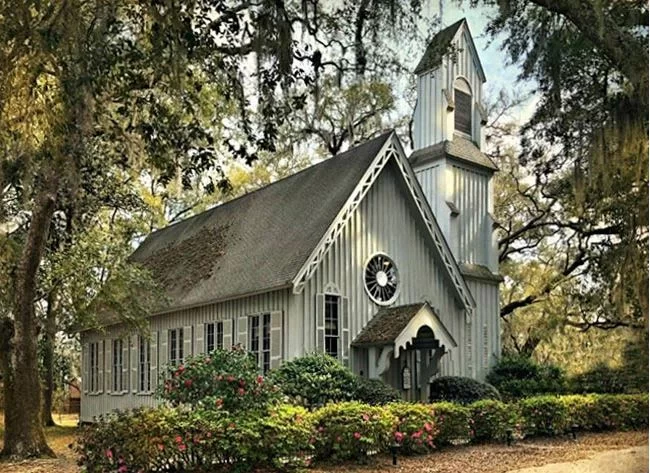
Image from Wikimedia.
Robert Smalls was born into slavery on April 5, 1839. Robert and his mother lived in a two-room shack behind 511 Prince Street in Beaufort. Robert was treated very well by his owners, Henry and Jane McKee, for it was rumored that Mr. McKee was Robert’s father.

Image from navymemorial.org.
Early Years
At the request of his mother, twelve-year-old Robert was sent to Charleston and hired out as a laborer. Most of his earnings were returned to his owner, but he could keep $1 per week for himself. He first worked in a hotel and as a lamplighter. His love of the ocean led him to find work on the docks. He began as a longshoreman and worked his way up to wheelman. His experience gave him great knowledge of ships and the Charleston harbor. Robert married Hannah Jones in 1856 and started a family. He was only 17. After a time, his goal was to purchase their freedom, but the price was very steep for someone of his circumstance.

Image from US Naval History and Heritage Command.
During the Civil War
The Civil War began with the Battle of Fort Sumter in April of 1861. The well-respected Robert was assigned to steer the CCS Planter, a Confederate military transport.
He piloted the Planter along the coast from South Carolina to Florida. Robert and the slave labor crew of the Planter were aware of the Federal blockade line just past the Charleston harbor.
In April of 1862, Robert began planning an escape. The following month, the Planter picked up four large guns that were bound for the Charleston harbor. They also took on 200 pounds of ammunition. The families of the crew were stationed nearby.
On the evening of May 12th, Robert and the rest of the crew were left unattended on the Planter. Smalls and seven of the eight slave crewmen escaped to the Union blockade. Smalls put on the captain’s uniform and straw hat. He sailed the Planter past the Southern Wharf and proceeded to pick up his wife, children and the families of other crewmen.
Robert guided the Planter past the Charleston harbor and Fort Sumter. He and his crew expertly headed straight for the Union Navy fleet. They replaced the Rebel flags with a white bedsheet. He surrendered the Planter and her cargo to the US Navy. Robert was just 23 years old.

He quickly became known for his heroic actions. He joined the US Navy and earned much fame as a pilot. Word of his exploits was published throughout the north. He was then promoted and made the captain of the Planter.

In 1864 Robert was voted an unofficial delegate to the Republican National Convention. He also spent time in Philadelphia. While there he learned to read and write and became a supporter of the Port Royal Experiment.
This was an effort to raise money to support the education of former slaves. It brought doctors and teachers to assist the former slaves into a new way of life. It also led to the founding of the Penn School.

Image from National Portrait Gallery
Smithsonian Institute.
In December of 1864, Robert and the Planter made their way to Savannah while Sherman Marched to the Sea. In 1865 Robert sailed the Planter to the Charleston harbor where the American flag was returned to Fort Sumter.
After this ceremonial act, Robert retired from military life. He continued to pilot the Planter, but his missions turned humanitarian. He took food and supplies to freedmen as a member of the Freedmen’s Bureau.

Photo by Carmen Pinckney.
Back in Beaufort
Upon his return to Beaufort, Robert purchased the house where he was formerly a slave. One day, his previous owner Jane McKee, suffering from dementia, walked back to the house she had loved on Prince Street. Robert greeted her, brought her inside, cared for her and allowed her to remain there until her death.

Robert went on to become a successful businessman and politician. He had a distinguished career of public service including serving in the South Carolina House of Representatives, the United States Senate, and four terms in the United States House of Representatives. Smalls also served as a major general in the state militia and later served as Port Collector for Beaufort.

In 1915, at the age of 75, Robert died of malaria and diabetes. He was buried in the Tabernacle Baptist Churchyard in downtown Beaufort. A monument to Robert proudly stands beside the church. It is inscribed: “My race needs no special defense, for the past history of them in this country proves them to be the equal of any people anywhere. All they need is an equal chance in the battle of life.” He made this statement to the South Carolina legislature in 1895.

Image by Carmen Pinckney.
Robert Smalls’ Legacy
Built in 1840, the Tabernacle Baptist Church was originally used as a meetinghouse and lecture room. In 1863, a 500 member African American congregation acquired the building and turned it into the church that is still in use today. This historic church and the Robert Smalls memorial statue are located at 901 Craven Street in historic downtown Beaufort.

Image by Carmen Pinckney.
The astonishing true story of Robert Smalls’ journey from slave to Union hero and ultimately United States Congressman can be found in the book Be Free or Die. If you would like a copy, the Frampton Plantation gift shop keeps it in stock.

For more information on Beaufort and her attractions visit https://southcarolinalowcountry.com/beaufort-port-royal-area/ .



























































































